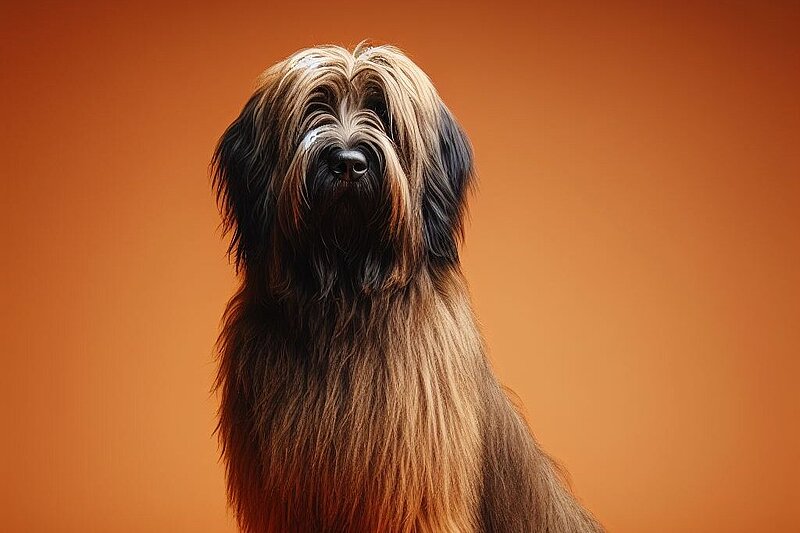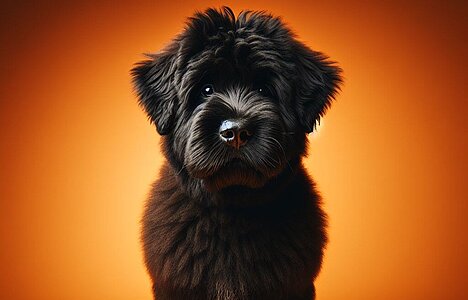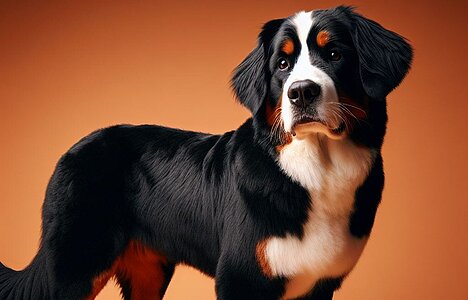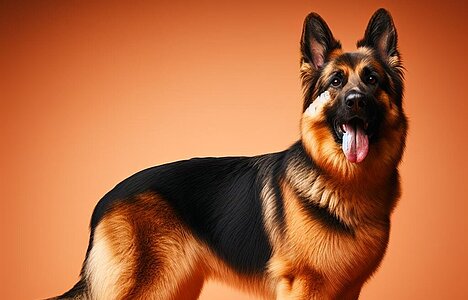The Briard - The gentle giant among the herding dogs
History of the Briard
The history of the Briard goes way back to the Middle Ages. This breed originated in France and was mainly bred in the Brie region, hence the name Berger de Brie. Originally, Briards were used as herding dogs and protectors of flocks. Their task was to protect sheep from wolves and other predators. The first written references to the Briard can be found in writings from the 8th century, and they were later used by the French army in the First World War as ambulance and signaling dogs.
Who is the Briard suitable for?
The Briard is a versatile dog that is well suited to active families and individuals. Due to its intelligence and eagerness to work, it needs clear leadership and mental exercise. It is not a dog for people who leave it alone for long periods of time, as it is very people-oriented and needs a lot of attention. Families with children benefit from the Briard's gentle and protective nature, provided the children are old enough to treat the dog with respect.
Character of the Briard
The Briard is characterized by its loyalty, intelligence and courage. It is alert and protective, which makes it an excellent guard dog. Despite its protective instincts, it is loving and affectionate towards its family. Briards are known for their independence and sometimes stubbornness, which is why consistent but loving training is necessary. They have a strong need for social interaction and bonding with their humans.
Appearance of the Briard
The Briard is a large and powerful dog with an impressive appearance. It has a long, wavy or slightly curly coat that comes in various colors such as black, gray or fawn. A characteristic feature is its luxuriant beard and distinctive eyebrows, which give it an unmistakable appearance. Its ears are set high and can be either naturally drooping or cropped.
Size and weight
An adult male Briard reaches a shoulder height of 62 to 68 cm, while females are slightly smaller, with a shoulder height of 56 to 64 cm. The weight varies between 30 and 40 kg, depending on sex and build.
Grooming the Briard
Grooming a Briard requires time and dedication, especially because of its long coat. Regular brushing, at least two to three times a week, is necessary to prevent matting. During the shedding season in spring and fall, the Briard should be brushed daily. A regular check of the ears, eyes and teeth is also important to detect health problems at an early stage. Bathing should only be done when necessary to preserve the natural oils in the coat.
Health of the Briard
The Briard is generally a robust and healthy breed, but as with many large dog breeds, some health problems can occur. These include hip dysplasia, elbow dysplasia and certain eye conditions such as progressive retinal atrophy (PRA). Responsible breeders have their breeding stock tested for these and other genetic conditions to minimize the risk.
Exercise and movement
The Briard is an active dog that needs plenty of exercise and mental activity. It is ideal for various dog sports such as agility, obedience or tracking. Due to its urge to move and its size, the Briard is better suited to a home with a garden, but can also adapt to life in the city if it is given sufficient exercise and activity.
Training recommendations
Briards are very intelligent dogs that learn quickly and enjoy working. Early socialization and consistent training are essential. Positive reinforcement methods work best, as Briards can react sensitively to harsh methods. Due to their protective instincts, it is important to set clear boundaries and challenge them mentally on a regular basis.
Behavior with children and other animals
Briards are generally patient and loving companions for children. However, they can sometimes be boisterous due to their size and energy, so interactions with young children should always be supervised. Briards generally get along well with other pets, especially if they are socialized early. Their herding instinct can sometimes lead them to try to "herd" other animals or even children.
Recognition by the FCI
The Briard is recognized by the Fédération Cynologique Internationale (FCI) and is listed in Group 1, Section 1 (herding and driving dogs). This recognition underlines the importance and standard of this breed worldwide.
Information
Alternative Names
Country of origin
Appearance
Height at withers
Weight
Life expectancy
Breeding
FCI-Group
Standard
Section
More pictures
Similar to Briard
These dog breeds look similar to the Briard or resemble it in character.




